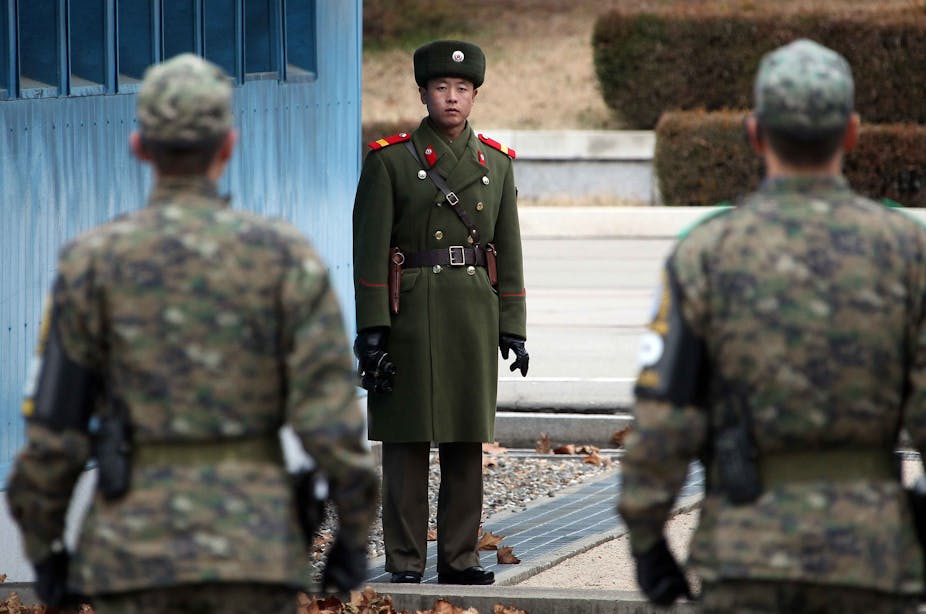The death of Kim Jong-il has refocused the world’s attention on the “Hermit Kingdom”, North Korea. This moniker is an apt description of its isolation from the international community – an isolation that has impacted on the structure of North Korea’s capacity to generate foreign currency revenue.
North Korea today remains an economic basketcase, labouring under the remnants of an inefficient command economy that continues to be hollowed out by grassroots entrepreneurialism. Economic sanctions levied by the international community have further contributed to Kim regime’s isolation. In this environment, foreign currency is king.
The fall of the Soviet Union in 1991 and the end of subsidised imports from the communist bloc badly exposed North Korea’s lack of foreign currency income. As Russia and China began to demand payment for goods in hard currency, the Kim regime was left with few realistic options for sources of foreign currency income.
North Korea has trouble generating export income because it struggles to produce high quality value-added goods. Because of its ongoing economic crisis and the rigidity of its political system, it lacks the modern infrastructure and investment capital necessary to competitively integrate into the global economy.
To address this problem, Kim Jong-il proclaimed the doctrine of Songun (military-first) politics in 1998, whose ultimate goal was to create a self-sustaining defence sector that would spearhead of North Korea’s economic recovery.
Arms exports have become an important sector of the Songun economy, with military-run enterprises producing products including small arms, artillery, and light tanks for export. The regime has sold ballistic missile systems to Iran, Pakistan and Syria, along with alleged sales to Iraq (prior to 2003), Nigeria, Libya and Egypt.
Earnings from weapons exports reportedly net North Korea up to US$1 billion annually, approximately half of which came from the sale of missile systems.
North Korea’s military exports are also likely to have included nuclear technology. It has been reported that the country has sold nuclear technology to Syria and Myanmar. While these exchanges are unlikely to have included fissile material, the widening of the arc of nuclear proliferation that these sales represent is certainly troubling. The greatest fear is that North Korea may sell fissile material itself to dangerous international buyers, beyond the oversight of the nuclear nonproliferation regime.
Contributions from state-sanctioned criminal enterprises represent another foreign currency income source. North Korea has exhibited a consistent pattern of state involvement in criminal activities over a long period. Drug production, drug trafficking and counterfeiting activities operate within sensitive, closely-monitored areas of the government and exist on a scale large enough to require cross-institutional coordination and support.
Any factory can run a drug production operation alongside its ordinary productive functions. For some factories, drug production may be the only function keeping them open. Profit margins on illegal activities are often as high as 500%, far beyond those earned by conventional trade – this is one of the reasons why criminal activity is so lucrative. Activities of this kind could not have been possible without direct oversight from the highest echelons of the regime leadership.
A number of international investigations have implicated the regime in a range of illicit activities, including the production and distribution of narcotics, counterfeiting, smuggling, and money laundering.
These include the well-documented incident in April 2003 when Australian law enforcement officials boarded a North Korean registered ship — the Pong Su — off Australia’s east coast, producing a seizure of 125kg of heroin worth $US150 million.
In February 1995, Russian authorities detained two North Korean nationals in Vladivostok, seizing eight kilograms of heroin. Between 1998 and 2002, Japanese police intercepted nearly 1,500kg worth of methamphetamine originating from North Korea, with a wholesale value of over $US75 million.
According to the US State Department, methamphetamine is still traded across the China-North Korea border, although there have been no recorded instances of narco-trafficking linked back to the North Korean regime since 2003.
The counterfeit production of cigarettes has become a lucrative earner. A container-load of cigarettes may cost $US70,000 to produce but can retail on the street for between $US3 million and $US4 million. North Korea has also been involved in smuggling items such as conflict diamonds, ivory, rhinoceros horns, and other exotic animal species, often under the cover of diplomatic protection.
These cases demonstrate that regime criminal activity is systematic, with speculative estimates of illicit income ranging from US$500 million to US$1 billion annually. It is likely that these lucrative criminal activities have become deeply entrenched within the political economy of the North Korean state, where access to foreign currency is vitally important.

